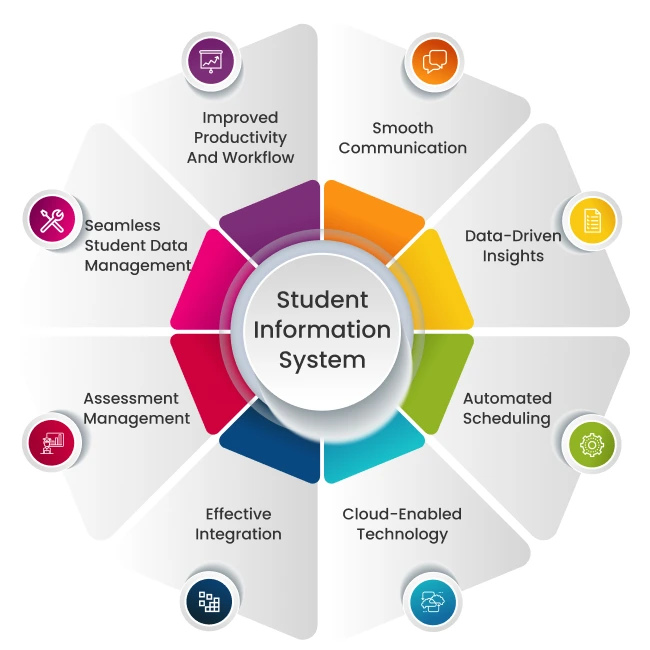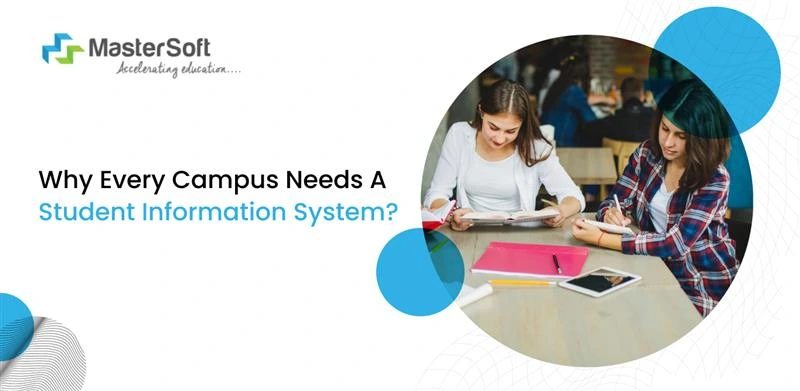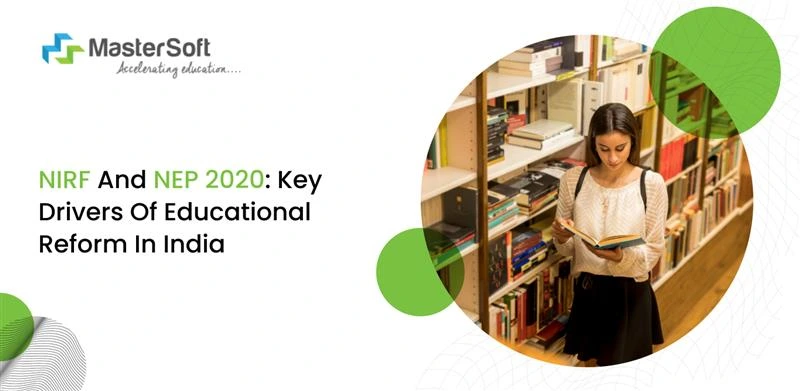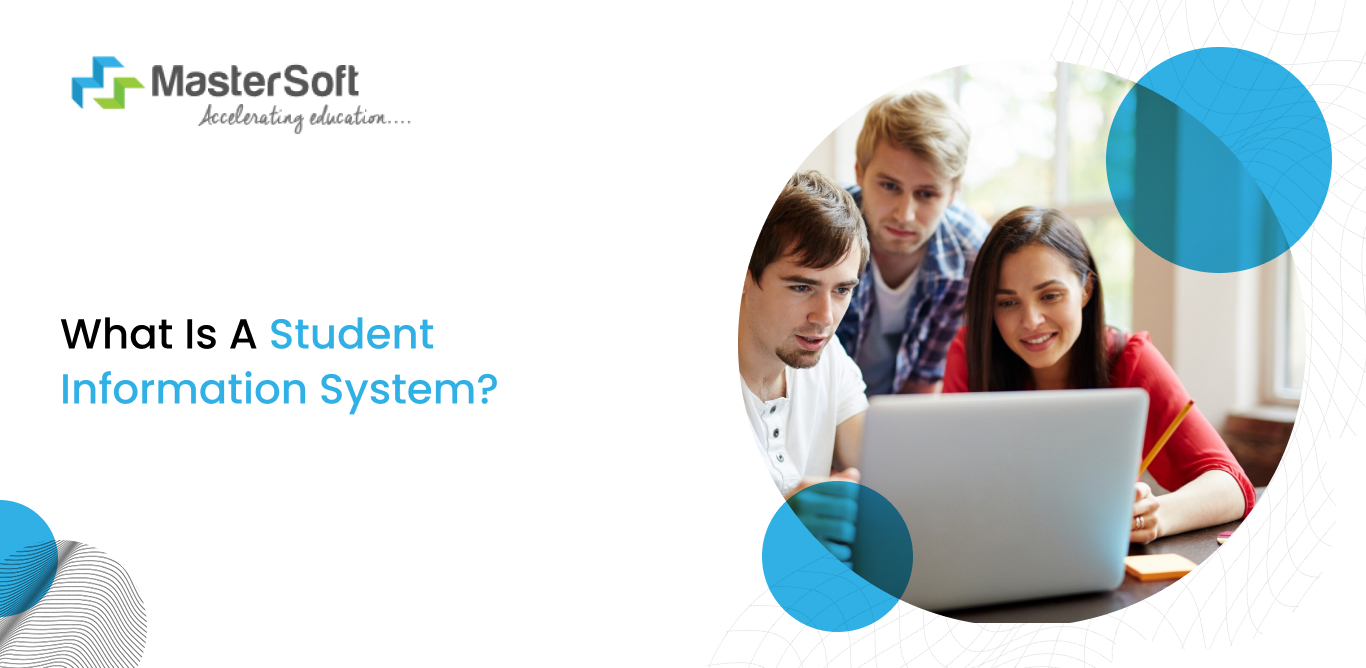27, Jan 2025
The smooth functioning of core departments is instrumental in the organisational success of educational institutes. Relying on outdated mechanisms or carrying out key tasks, such as collecting and managing data manually, is ineffective in the long run.
Fortunately, higher education institutes can rely on advanced tools like the Student Information System (SIS), which can automate administrative activities. In effect, it saves time and effort and enhances institutional efficiency and overall productivity. However, that’s not the only reason it has emerged as one of the must-have tools for institutes.

Let us take a look at SIS’s various functionalities, which make it ideal software for educational institutes:
1. Seamless Student Data Management
Facilitating a systematic admission process entails team coordination, timely communication, and a detailed documentation process. A single error by either students or admin can lead to procedural delays and necessary review and readjustments.
Therefore, a digitalised process is an appropriate replacement for the conventional method, where institutes can leverage SIS to simplify the enrollment procedure in the following ways:
- The tool provides online portals wherein students can submit their applications and necessary documents.
- The centralised database records and stores student data (personal contact information, progress reports, academic data) efficiently, allowing the admin to access them accordingly.
- The tool sends automated notifications and emails to applicants, informing them of the published merit list.
- Applicants can check the status of their admission through the portal.
- Integration with other systems like the fee management system can streamline online fee transactions.
2. Improved Productivity and Workflow
Carrying out day-to-day administrative tasks manually takes a considerable amount of time and effort, leading to exhaustion. The SIS software can provide adequate support by automating routine activities, especially for teachers and admin staff.
Teachers can utilise the tool to record grades and automate attendance tracking, eliminating manual data entry and reducing inconsistencies. On the other hand, the student data’s central repository helps stakeholders access and share information easily without waiting for someone’s approval to retrieve a file or document.
When the institute team members are able to get timely access to relevant data, it helps to make informed decisions. Hence, it contributes to institutional productivity and workflow and reduces administrative workload.
What is a Student Information System?
3. Smooth Communication
Inaccurate or delayed communication can lead to misunderstanding and unintended errors; therefore, establishing an effective communication system should be a top priority. Besides, it might not always be possible for stakeholders to receive or make calls; a more robust medium is the need of the hour.
That is where SIS’s centralised messaging can be an ideal solution, which helps students, teachers, and parents to interact through the platform. It supports email as well; hence, teachers can send grades or academic reports to respective students and parents.
Stakeholders can access the system 24/7 and check updates related to exams, attendance, upcoming academic events news, assignment deadlines, etc. Furthermore, teachers can send targeted messages to specific groups of students with clear guidelines to overcome their shortcomings.
4. Data-Driven Insights
Assessing the academic performance of students proves to be incomplete if it does not provide a clear picture of students’ problem areas. Fortunately, teachers can leverage the software’s built-in analytic tool and evaluate the nuances of individual learners’ capabilities.
The tool generates comprehensive academic reports by tracking grades, monitoring attendance, test scores, and assignment submission rates. Teachers can use the reports strategically to identify areas of strength and weaknesses.
Simultaneously, they can determine the rate of absenteeism among students, at-risk students, and those who need additional support. That is when they can take proactive measures to prevent students from dropping out and prepare a student retention strategy by collaborating with institute team members and parents.
5. Automated Scheduling
The software that has a built-in scheduling feature saves time by automating specific administrative activities. For example, it can automate the allocation of teachers to particular grade levels or courses, depending on their availability and qualifications.
The admin can also use the tool to organise the examination date schedule activities according to the subjects and assign invigilators accordingly. What’s more, they can plan and conduct extracurricular activities more efficiently by streamlining the dates, reducing conflicts, and optimising resources.
6. Cloud-Enabled Technology
Installing a new system or software comes with its prerequisites, where investing in additional systems might become necessary over the years. In contrast, cloud-enabled SIS has reduced IT infrastructure costs, eliminating the need to make heavy investments in hardware and software.
Institutes can upgrade resources and features according to their demands, leading to operational expenses and reducing unnecessary costs. Moreover, the cloud-enabled system provides customisation features, allowing institutions to incorporate features according to the operational requirements.
Institutional management and departmental heads can get insights into the ongoing progress of students, course effectiveness, and attendance trends.
10 Great Benefits Of Implementing Student Information System (SIS)
7. Effective Integration
Educational institutes upload software and applications according to their operational needs; therefore, they need a system that accommodates other tools. That is where modern SIS software that comes with Application Programming Interfaces (APIs) can be useful.
APIs facilitate data exchange with other systems and lead to smooth data synchronisation between the SIS and other tools. Consequently, it streamlines core activities such as enrolment processes, academic report transfer, financial aid activities, etc.
8. Assessment Management
Institutes can integrate the system with tools like the learning management system and establish an effective evaluation mechanism. Teachers can develop different kinds of assessment questionnaires, including quizzes, tests, assignments, etc., in a centralised location.
As a result, they can access these tests with just a simple click of a mouse and conduct regular formative assessments conveniently. Moreover, educators can use the assessment or student performance data to determine the student’s main problem areas.
Additionally, they can create adaptive assessments by adjusting the test’s difficulty levels, helping to conduct personalised evaluations. Also, automating grading and sharing learning materials and assessment results with students streamlines assessment management.
Evidently, the student information system is an advanced tool with multifarious advantages; however, with the tool’s widespread availability, it can be difficult to choose the best ones. For instance, MasterSoft’s SIS is often considered one of the best.
Why Choose MasterSoft’s Student Information System?
MasterSoft ERP Solutions is a leading organisation that has revolutionised the ed-tech sector through its innovative software and applications. The Student Information System is one of its most in-demand and cutting-edge solutions that enjoys popularity among educational institutes as it offers:
- Effortless student data management
- Easy-to-use interface
- Attendance management
- Gradebook management
- Highly secured institutional data
- Centralised communication platform
- Effective interoperability
Final Thoughts
The Student Information System (SIS) is an advanced technological solution that automates administrative activities and improves interdepartmental communication. Furthermore, it provides data-driven insights into students’ performance. Therefore, it proves to be an essential tool whose functionality goes beyond student information management.
Want to enhance students’ thinking abilities but don’t know where to start? Learn More
Mobile: 08448010216
Email: janki.somani@iitms.co.in













